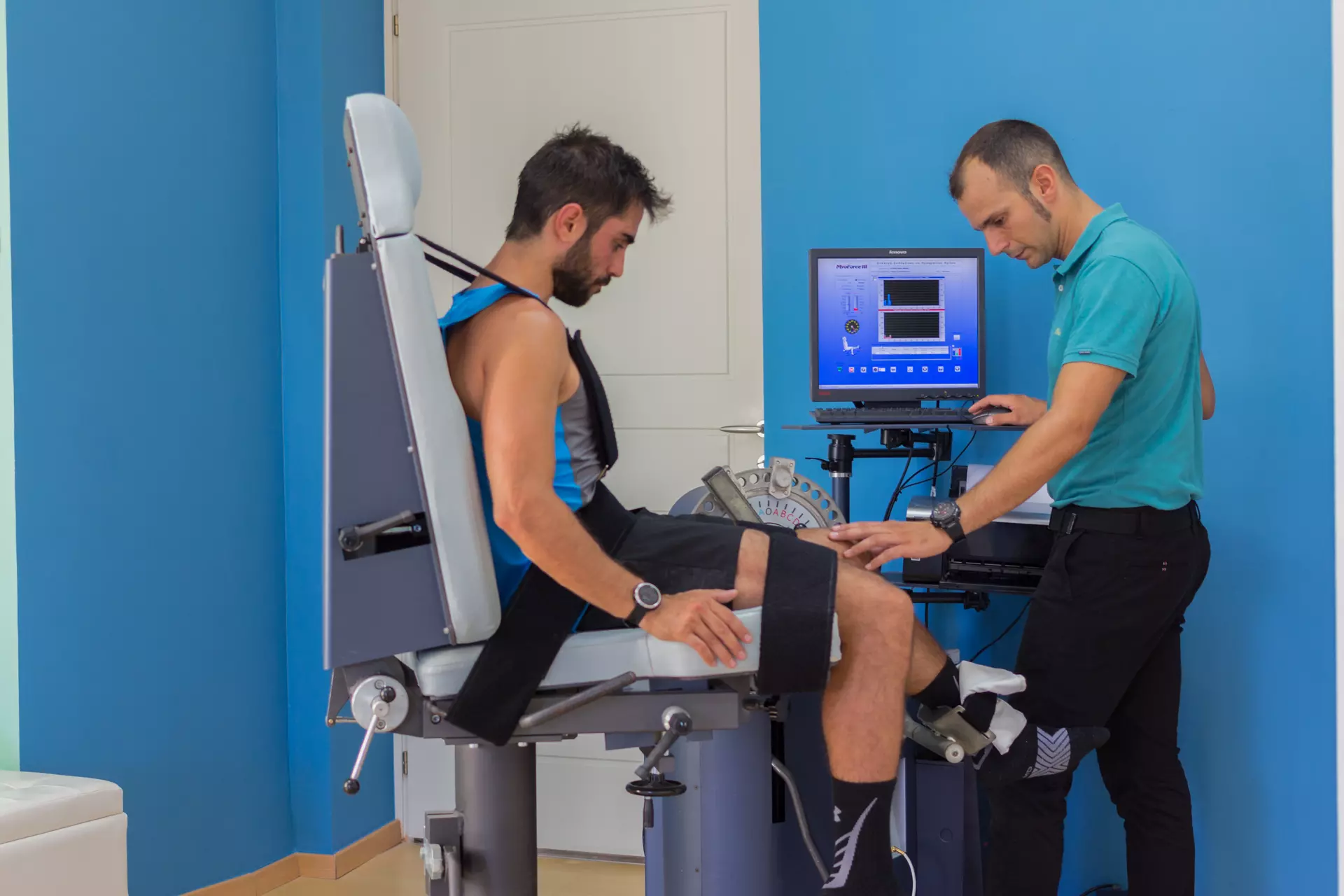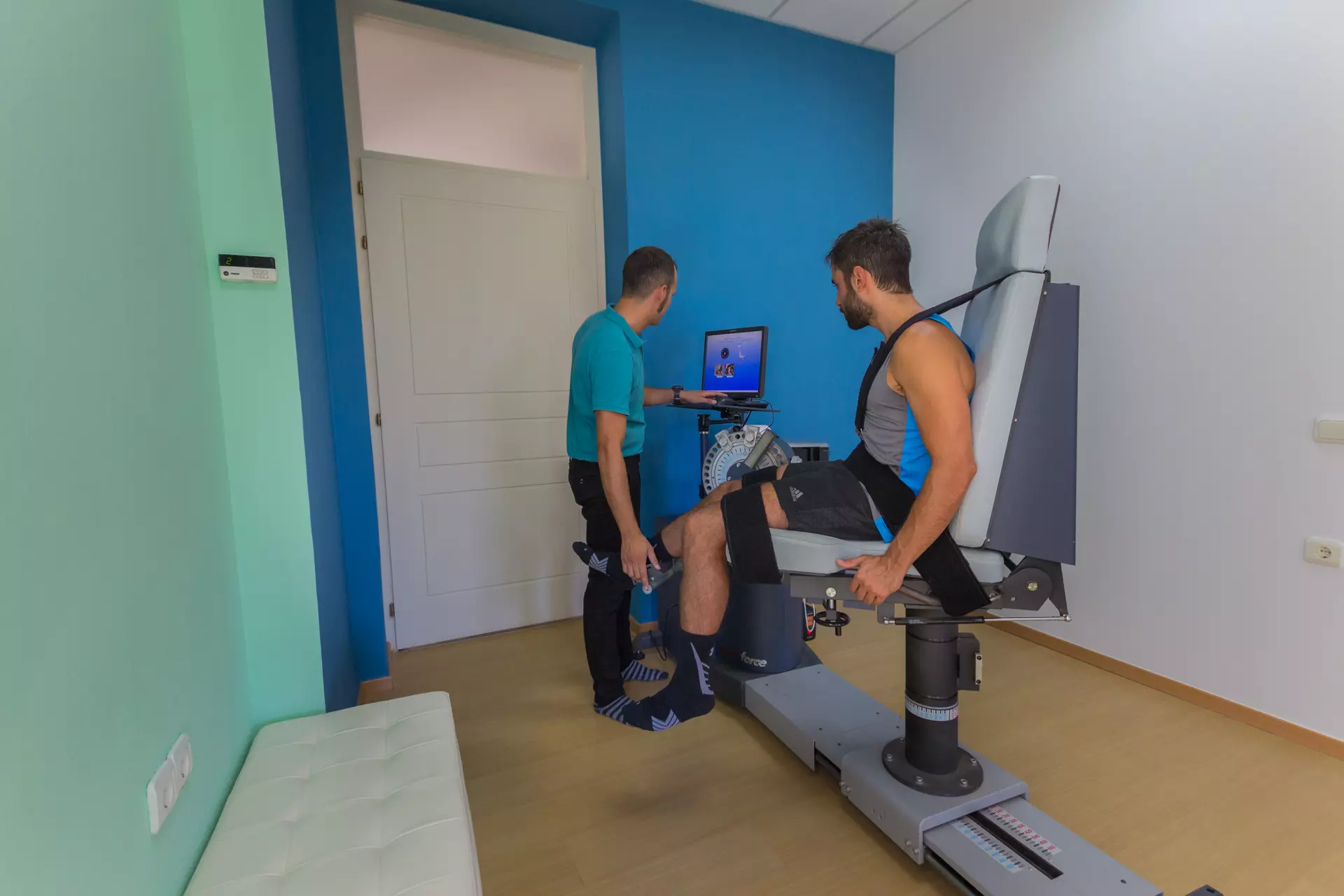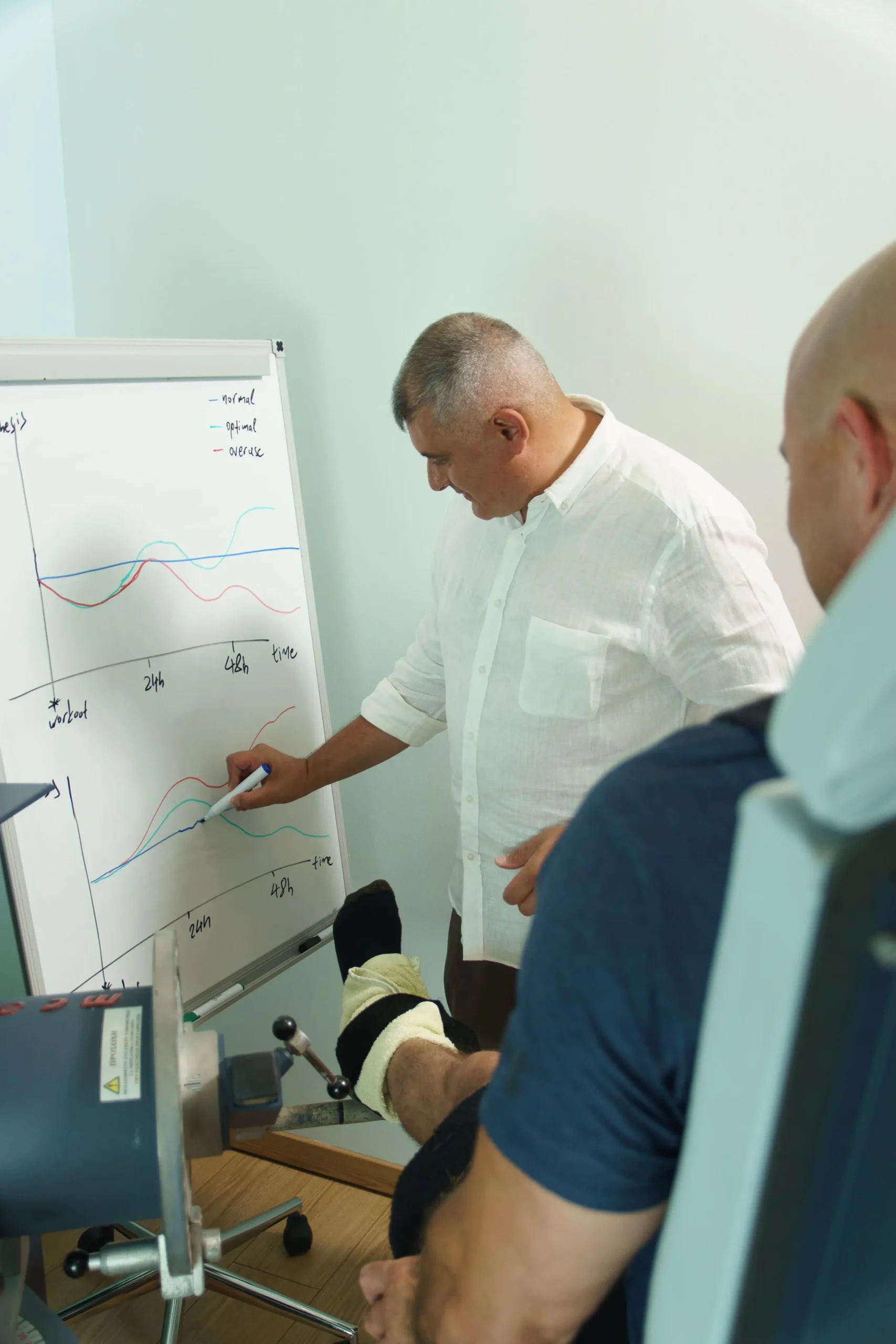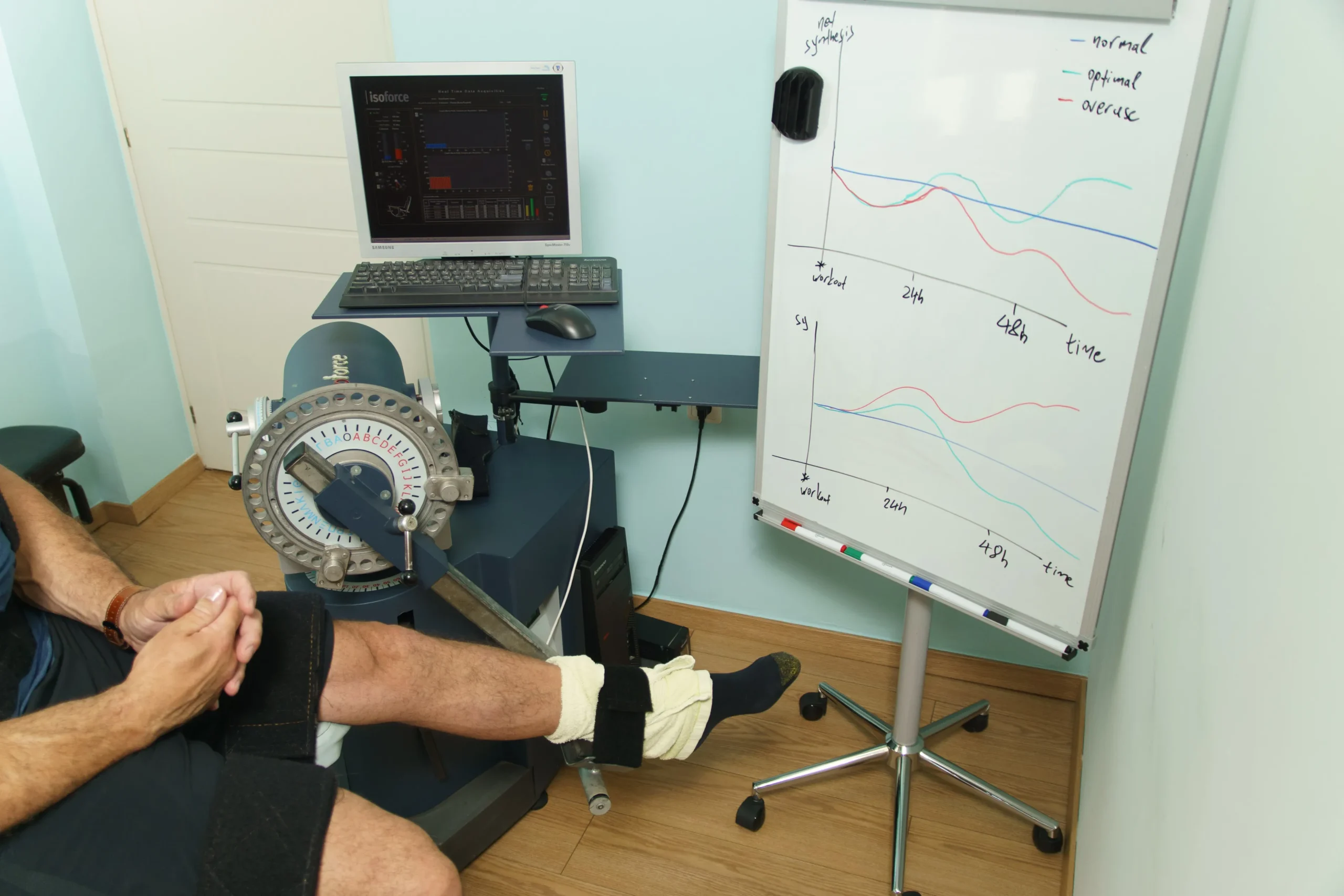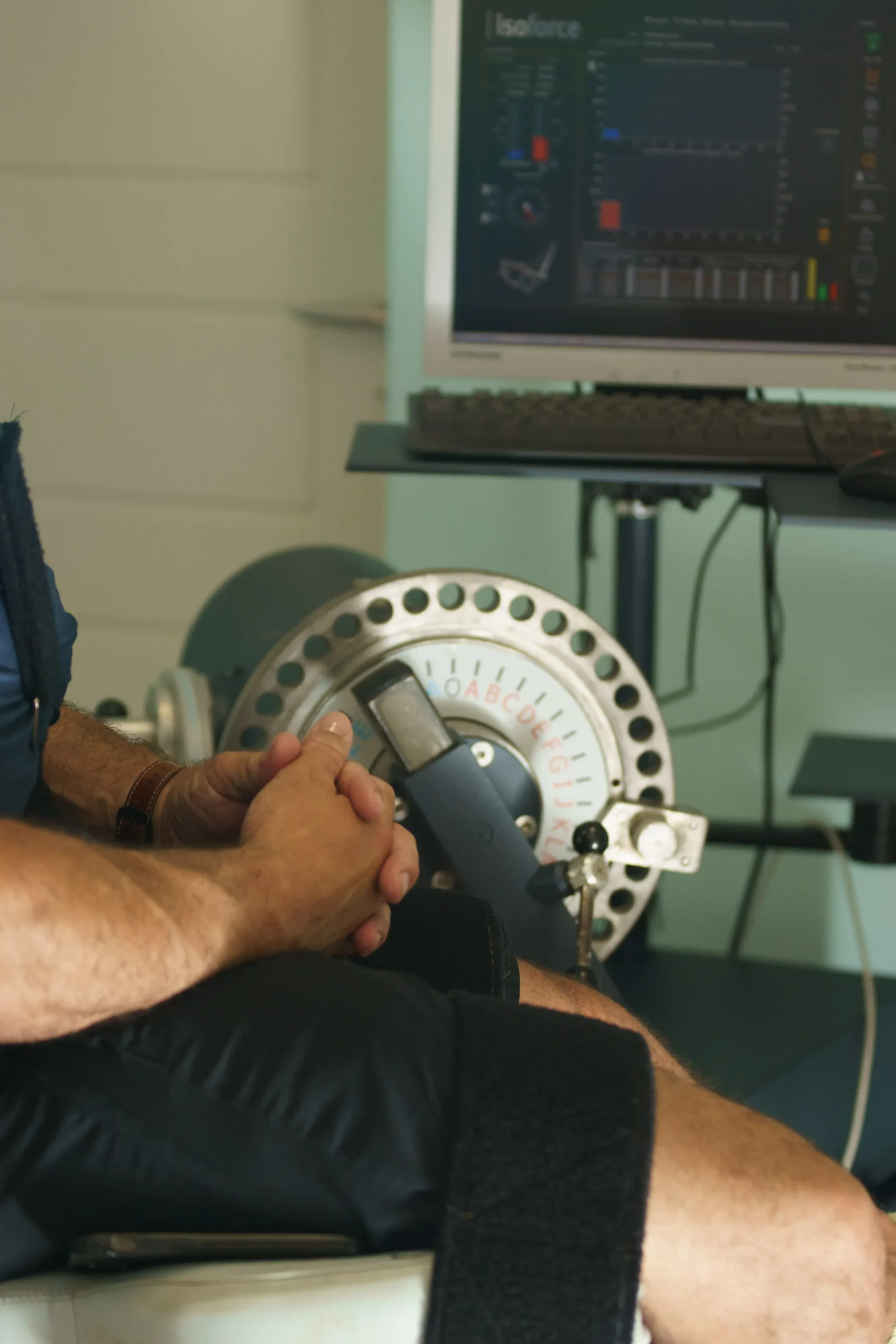Isokinetic Dynamometry - Chania
Isokinetic dynamometers are on the frontline of sports-specific rehabilitation programs and are essential for post-operative joint mobilization, and muscle strength & conditioning. In our clinic, we have the privilege to possess a top-quality isokinetic dynamometer by Microforce and in this section, you can get informed about the isokinetic dynamometry background & reasoning of applying.
About isokinetic dynamometers
In recent years, the measurement of muscle force under conditions of constant velocity (isokinetically) has become popular. Part of this popularity may be attributed to the ability of isokinetic dynamometers to provide information about dynamic muscular contractions; information that previously was not easily obtainable. The use of cable tensiometers and other forms of static dynamometers have provided little information about the dynamic qualities of muscular contraction and other types of apparatus designed to measure dynamic forces have been used only sparingly.
Force, work, and power in dynamic exercise, where velocity is not controlled, are not easily measured or calculated since the changing mechanical advantage of the limb-lever system alters the force applied to the muscles through the range of motion. What is usually measured, is the resistance weight and the completed number of repetitions.
The development of isokinetic rehabilitative devices in the late 1960s provided tools to study the mechanical properties of muscle under conditions of constant velocity in vivo. Since modern isokinetic dynamometers supply data about muscle load and limb velocity throughout a joint range, and due to the mass production and marketing of these apparatus, the use of isokinetic exercise in rehabilitation, conditioning, and research has become widespread. Isokinetic exercise, however, has unique characteristics and any generalizations regarding its role as a therapeutic modality or training aid must be made in light of the specific nature of this mode of exercise.
Nature of isokinetic exercise
In 1967, Hislop and Perrine identified the unique factor in the concept of isokinetic exercise as the control of the speed of muscular performance. They indicated that to achieve such performance it is necessary to provide an external means of holding the speed of body movements to constant rates regardless of the magnitude of forces generated by particular muscles. The isokinetic exercise has been described as a form of resisting exercise, made possible by an electro-mechanical device that keeps limb motion at a constant, predetermined velocity.
Because of a variable speed-controlling mechanism in the isokinetic device, the set velocity of an exercising limb cannot be increased. Instead, as more force is exerted against the lever arm of the apparatus the energy of the moving limb is absorbed by the apparatus and converted to the increased resistance encountered by the limb. Movement, therefore, occurs at a constant predetermined speed.
The most common types of isokinetic dynamometers contain either an electronic servo-motor or hydraulic valve as a speed-control mechanism which, theoretically, could prevent the acceleration of the limb irrespective of increases in applied force once the preset speed has been attained. These devices are essentially passive, in nature, since they resist rather than generate forces. Also, they do not store potential energy, such as that which occurs in weightlifting where the weight lifted must be lowered with control.
Structures of applying isokinetic exercise
With the modern isokinetic systems, we can apply isokinetic to all major joints of the body, in every anatomic movement, and at different levels.
Each model of isokinetic dynamometer has its basic techniques, to perform all the above mentioned, however, their fundamental application is based on two main points. These are:
- The proper positioning of the examined/practised limb
- The appropriate/stabilisation
The use of the specified parts of the equipment provides a controlling /exercising possibility for the following movements:
- SHOULDER: abduction/adduction, extension/flexion, internal/external rotation, horizontal abduction/adduction, diagonal movements.
- ELBOW: extension/flexion.
- FOREARM and WRIST: pronation/supination, extension/flexion, ulnar/radial deviation.
- HIP: extension/flexion, abduction/adduction, internal/external rotation.
- KNEE: extension/flexion, internal/external tibia rotation.
- ANKLE: dorsal/plantar flexion, pronation/supination.
The order in which antagonistic movements are mentioned is not random, since all isokinetic systems are formed in this way so that comparison and valuation of the data could be feasible among them if needed, (for example, for the knee we will never see the comparison flexion/extension, but extension/flexion etc).
Guiding points of isokinetic applications
Prior to any isokinetic application (assessment or exercise), we must evaluate the muscle, heart, and breathing capability, as well as the pathological condition of the person we are about to examine or exercise with an isokinetic dynamometer. Evaluation is essential in order to define a proper selection of the speed, the intensity, and the execution tempo.
For the safety of the individual, as well as for the data accuracy we get from an isokinetic assessment, there are some protocols and guidelines that need to be followed, thus include:
- Objective & subjective examination of the patient/athlete before the control/exercise, for any limitations, to be identified.
- Appropriate warm-up of the muscle groups for both evaluated limbs (if it’s an assessment process test) or for the muscle groups of the practicing limb.
- Some types of injuries and surgical operations demand a limited range of movement during the exercise so as to avoid new injuries. The physiotherapist is responsible to recognise those hazards and define the right way of practicing, by using special parts of equipment and adjust the dynamometer to move its lever arm to a fixed (safe) range of movement.
- At least three sub-maximums and one maximum repetition at every control speed or practice, so that the orientation of the axis can be controlled, smooth limb movement, the patient’s tolerance and familiarisation with each speed.
- The examined/practiced limb movement requires careful observation during the application and intervention, by modifying the program if needed.
- After the intense muscular exercise, the joint might be stimulated. In this case after exercise, stretching should be done and/or applying ice, bandaging and limb raising.
In addition to the above comments, we must keep in mind that isokinetic exercise without pain, produces increased muscular work, even when performed without enormous effort from the patient/athlete. Isokinetics, especially on high speeds of control/exercise, requires a tempo of the higher productive act/energy that muscles can produce. Cardiovascular ability is also required when large muscular groups are exercised.


